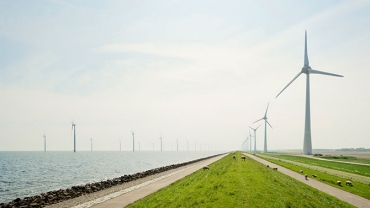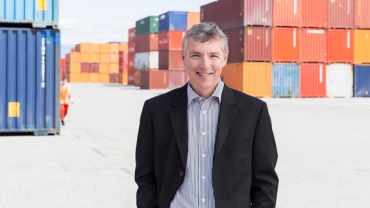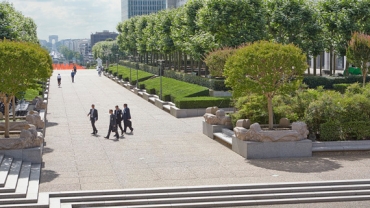
Smart investing in tough times increases resilience
Traditional cost measures no longer work, holistic actions do
In times of economic lows, companies instinctively look at their costs and where they can cut or optimise. Traditionally the focus of these efforts are on overhead functional costs - asking ‘back office’ functions like HR and Finance to cut costs within their silos. If things get worse these efforts become broader, adjusting spans and layers to reduce the size of the workforce. But so much is happening in today’s business and economic environment, challenging both cost structures and the midterm ability to succeed that traditional cost measures will simply not work. Instead, now is the time to look at the entire portfolio - at all structures and costs, and to do so holistically across silos, fundamentally adjusting both what your organisation does and how - so PwC's Mahadeva Matt Mani and Jan Willem Velthuijsen argue.
A strong breeze has been blowing across the European economy for some time now. Analysts may disagree on whether we can expect hurricane force winds or a breeze. And, depending on that, what course of action governments and the European Central Bank should be taking.
However, there's little argument about the challenges organisations and businesses are currently facing: high inflation, rising interest rates, unstable and unpredictable energy and commodity prices, and supply chains that are still disrupted. Then there's the unprecedented tightness in the labour market.
Businesses are caught between the vice of costs and investments
Moreover, organisations are challenged to invest substantially in, for example, ESG compliance, sustainability solutions and technology. In essence, businesses are caught between the vice of increasing costs, decreasing revenues, and inescapable investments they must keep making just to keep operating.
Some of these forces seem to be new, and the result of crises like the pandemic or the conflict in Ukraine. However, a closer look reveals that the majority of the challenges are the culmination of longer term trends. These trends will not disappear even after the crises are subsiding.
Current times call for holistic action
While in times of economic downturn most organisations and companies don't just sit back and wait for things to take a turn for the better, they almost instinctively focus on organisational and back office cost savings. But that's not enough now. With several economic crises and investment challenges coming together, today's situation calls for holistic action.
Organisations need to reassess their entire portfolio - across silos - to see where they add the greatest value and where they incur costs relative to that value. They need to challenge themselves in terms of end-to-end structure and design, and reinvent what work is done where and how. We believe that, in the current testing environment, organisations that allocate resources with clarity and purpose and take a more gutsy approach to growth can outperform their competitors.
And that's for a reason. When PwC analysed the performance of 5,700 companies over the last economically challenged cycles, a group of companies emerged that have achieved exceptional returns. These 'focused investors' were found to do a number of things better than other companies:
- Optimising the portfolio to create value
With economic pressures mounting, it's vital for companies to have a balanced growth portfolio that drives their performance in both the short and mid term. In doing so, it's important not to sacrifice innovations for future growth.
A global logistics leader has set the example, as our analysis showed. To secure its future operations, the logistics company is taking a critical look at all services and making a clear choice to divest lower margin operations, even if this means giving up on some topline revenue. It is transferring certain operations to third parties within its wider ecosystem so as to better focus on its core business.
At the same time, the company is investing billions of euros in a growth portfolio, developing solutions for the healthcare industry to transport and track and trace new drugs with specific storage and temperature requirements. In addition, the company is investing in artificial intelligence (AI) to reduce the number of manual checks of packages. This has increased productivity and speed in the market. The net result is that costs are focused in the right areas that are securing the present and the future.
- Radically overhauling the entire cost base
By reallocating all costs and investments, and taking actual value creation as a starting point, companies are better able to build flexibility into their existing budgets. It also creates room for reinvestment.
A global pharmaceutical company did just that. By linking its operational, financial and strategic data, the company gained a better understanding of the productivity of its internal, organisational, and external expenditure.
By looking end to end across functional silos the company found that their commercial organisation and operations teams were not optimised to focus on their most important growth areas. These were historically two areas they were hesitant to optimise, fearing that it might impact revenue. However, seeing performance end to end in this way, the company was able to make better choices about where to allocate commercial resources, how to improve digital selling, and how to better align operations resources against the needs of customers. The results have been spectacular, with not just costs being reduced, but higher quality growth in important products and markets.
- Proactively rethinking how work is done where
By rethinking where employees work and making greater use of digital technologies, companies can increase their productivity by up to 25 per cent.
A global technology company has shown that this is actually possible. It set up technology hubs in a number of countries where they were able to recruit talented people with the required tech and engineering skills. Its ‘bricks and mortar’ offices are located in those major hubs, but employees can work anywhere. To support this way of working they have invested in training and technologies that make collaboration easier. It has applied this model to shape its future hiring strategy, upskilling programs and footprint across all functions, resulting in a lower total workforce cost and securing critical talent, without having to substantially reduce the total size of the workforce.
A compelling and focused vision and strategy
What's important in all this is that executives must unite their business with a compelling and purposeful vision and strategy. It must be clear to everyone at the company, but also to external stakeholders, why certain choices are made and what they are supposed to achieve. And to be clear, that strategy must be about cost efficient growth, not just short-term cost cutting.
With all sectors of the economy facing disruption, companies can create huge value by the way in which they allocate each euro to make their strategy and growth agenda work. By consciously looking at growth opportunities, they have a significantly better chance of coming out of these disruptive times stronger.

How do you transform into a resilient organisation?
As an executive of a company or organisation, it is your job to keep business operations healthy and continue to seek value creation. This is necessary even in challenging economic conditions. Learn how we can help you transform into a resilient organisation.





















